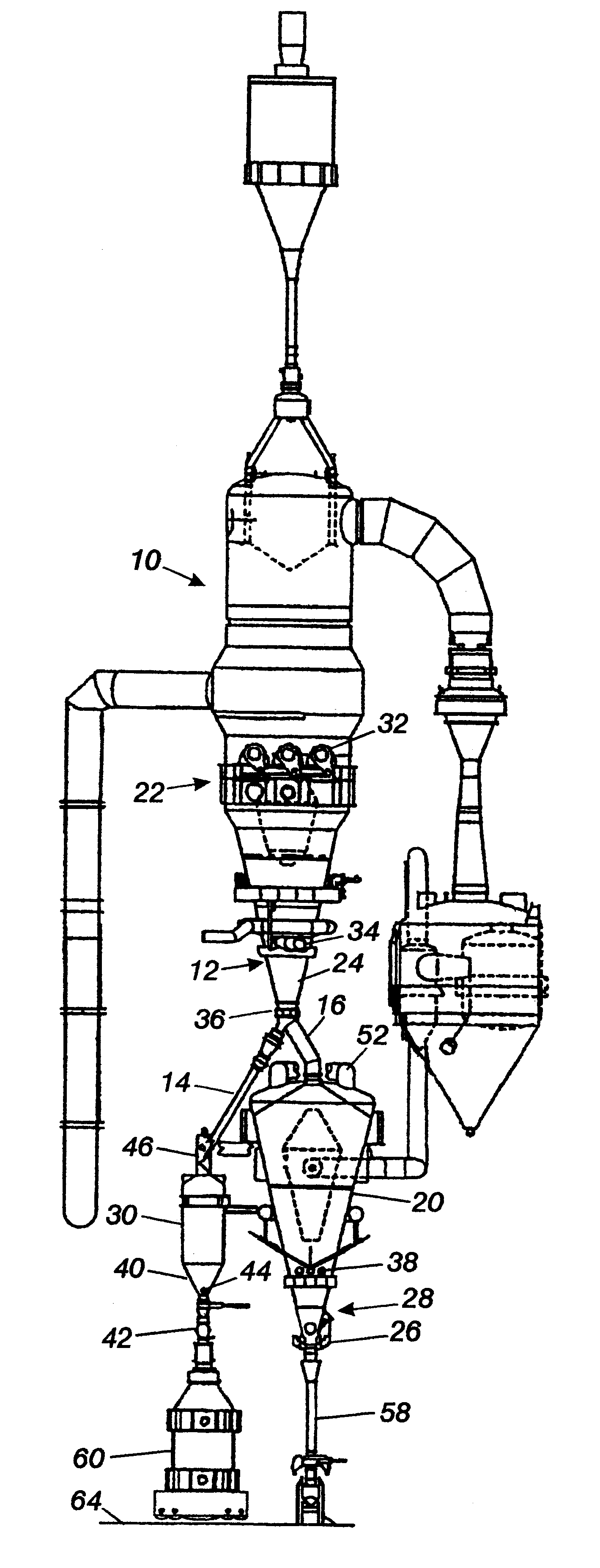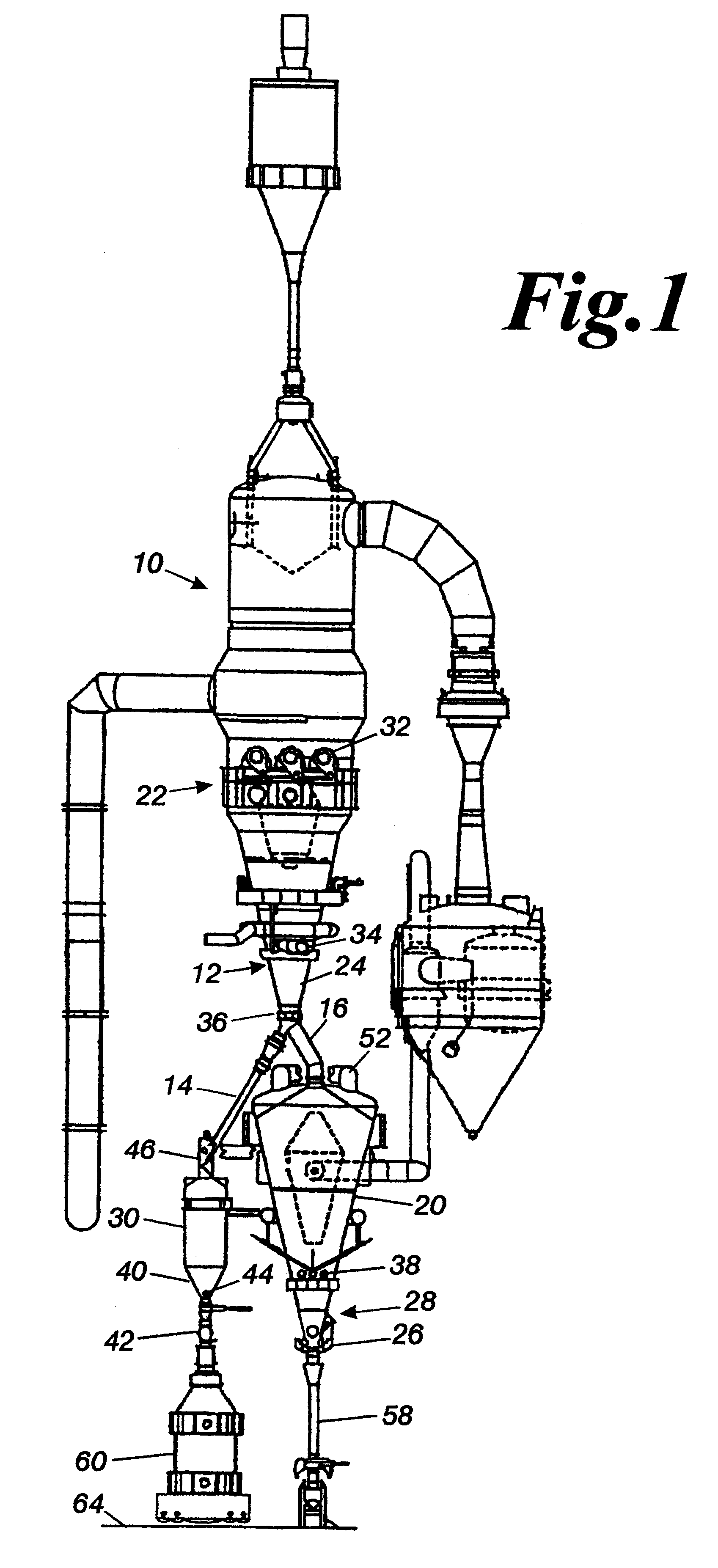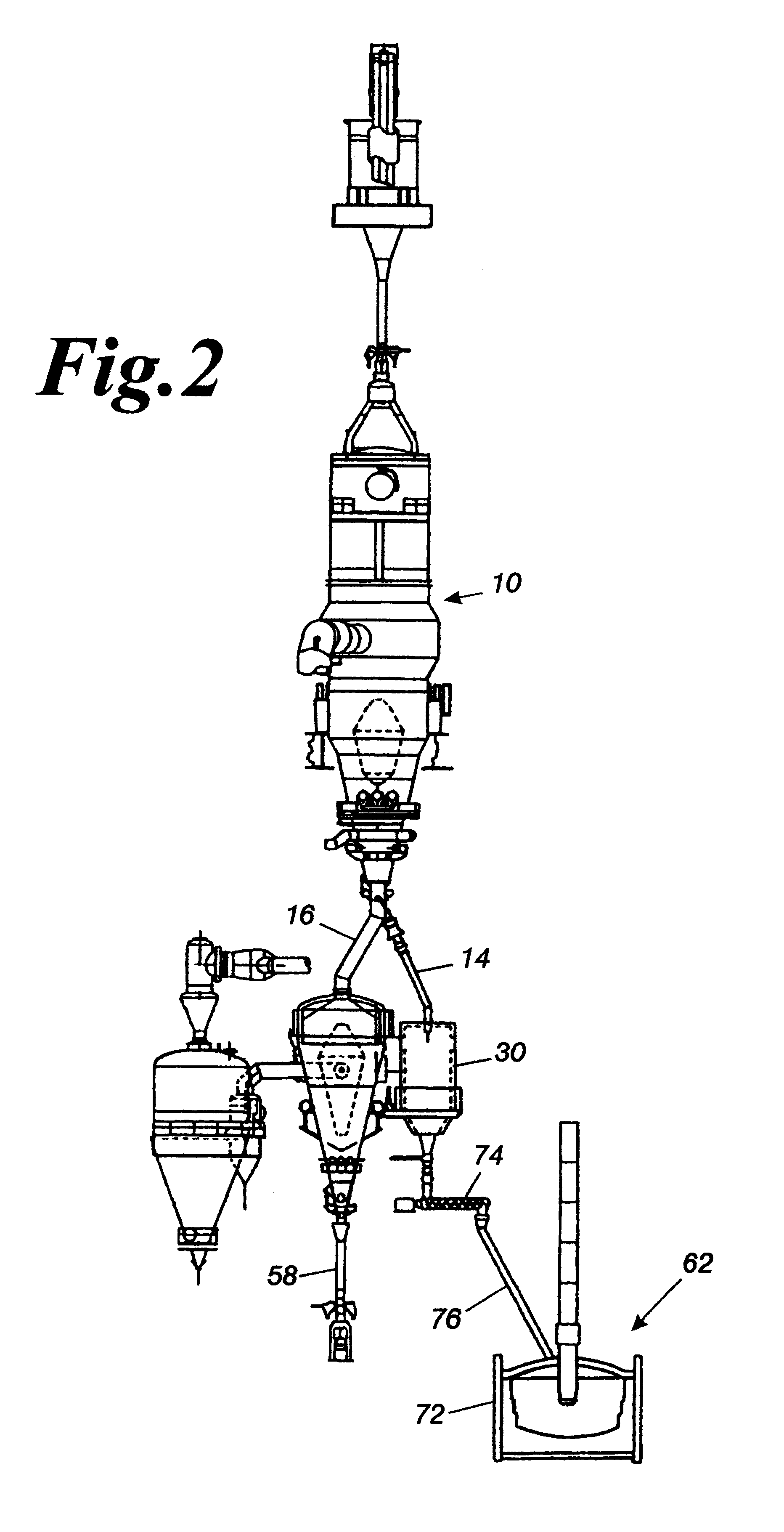Direct reduced iron discharge system and method
a discharge system and iron technology, applied in the field of direct reduced iron discharge system and method, can solve the problems of rusting, significant loss of metallization, inherent tendency to reoxidize, etc., and achieve the effect of satisfying demand and no loss of metallization
- Summary
- Abstract
- Description
- Claims
- Application Information
AI Technical Summary
Benefits of technology
Problems solved by technology
Method used
Image
Examples
Embodiment Construction
The surge vessel arrangement can have various configurations. The surge vessel can be attached to a briquetter. In the configuration shown, a product discharge chamber or a similar device is required upstream to "screen-out" large size product, as is done in an HBI plant.
The apparatus can also utilize a product discharge chamber or a similar device when the hot transport method from the DRI furnace to a meltshop is pneumatic conveying. Pneumatic conveying cannot transport large diameter material (i.e., greater than 200 mm).
When the invention is attached to a conventional EAF, the vertical screw feeder on the inlet of the surge vessel dictates the furnace discharge rate in conjunction with the pellet cooler discharge feeder. When the invention is attached to a hot transport system or to a continuous melting furnace 70, only one screw feeder is required. Alternatively, screw feeders can be replaced by another device such as a wiper bar.
When the invention is attached to a conventional ...
PUM
| Property | Measurement | Unit |
|---|---|---|
| temperature | aaaaa | aaaaa |
| temperature | aaaaa | aaaaa |
| size | aaaaa | aaaaa |
Abstract
Description
Claims
Application Information
 Login to View More
Login to View More - R&D
- Intellectual Property
- Life Sciences
- Materials
- Tech Scout
- Unparalleled Data Quality
- Higher Quality Content
- 60% Fewer Hallucinations
Browse by: Latest US Patents, China's latest patents, Technical Efficacy Thesaurus, Application Domain, Technology Topic, Popular Technical Reports.
© 2025 PatSnap. All rights reserved.Legal|Privacy policy|Modern Slavery Act Transparency Statement|Sitemap|About US| Contact US: help@patsnap.com



